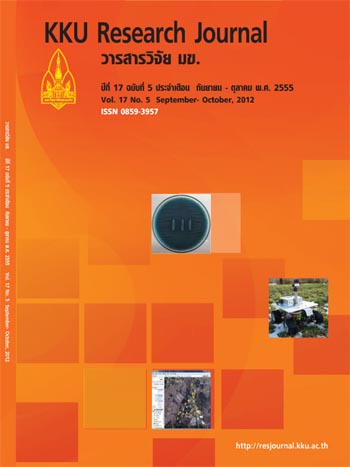Improvement of nattokinase production by Bacillus subtilis using an optimal feed strategy in fed-batch fermentation
Main Article Content
Abstract
Nattokinase is an enzyme with strong fibrinolytic activity that can be used for preventing hypertension and cardiovascular diseases. In this study, Bacillus subtilis K-C3 was cultured in fed-batch fermentation for the production of nattokinase. In a first step the enzyme production was optimized by testing substrates for their influence
on the enzyme activity. Experiments revealed glycerol as the best substrate with the highest enzyme yield and less by-product formation compared to other substrates. The optimal process parameters were then applied to fed-batch fermentation. An optimal feed strategy for fed-batch that allowed for maximum enzyme production was designed based on fed-batch kinetic model. During fed-bath operation a specific growth rate of 0.2 h-1was controlled using a glycerol feed rate predetermined from the model. With the designed feed strategy, a high cell density of 73.47±2.63 g/l and a nattokinase activity of 9,198.51±268.09 units/ml were achieved at 28 hours of cultivation. An overall enzyme yield of 61.36±1.80 units/g was obtained. Productivity of nattokinase in fed-batch fermentation
was 545.95±27.88 units/h, a 20-fold higher than that in batch fermentation. High titer and high productivity of nattokinase achieved in this study has indicated the efficiency of the designed feed strategy used for fed-batch process. The same strategy may also be applied to other processes to increase production of other enzymes.


